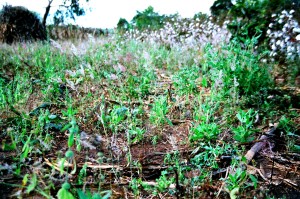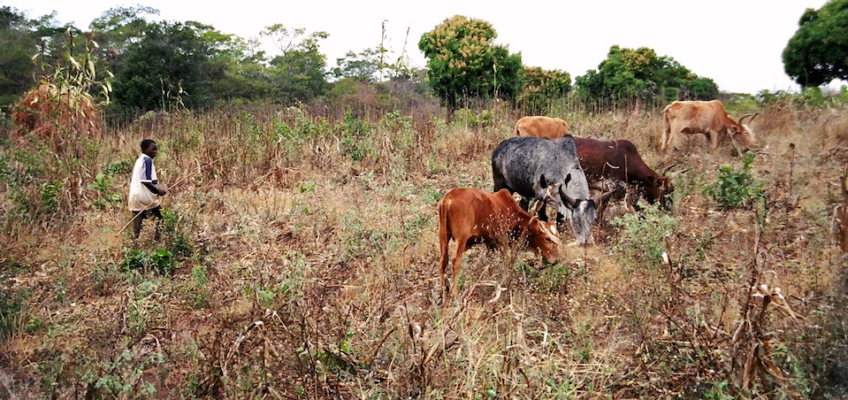The Savannah in Zambia is characterized by scattered trees and short grasslands that often stretch for as far as the eye can. The Savannah in river valleys is a wholesome sight of beauty. The masala is different.
There are small farm fields near every village. These are pieces of the Savannah that have been cleared by axe and hoe for growing food. These fields grow all the food a family will need each year. Maize, peanuts, peas, beans, cassava, mbwete (sweet potatoes), pumpkins, majungu, zghama, chimwamwaji (water melon), chiphwete, chipokoro, and njibvo (a type of sugar cane). There are other types of vegetable that have a symbiotic relationship with the domestic crops. They grow on in the field on their own every year without being deliberately planted. These include the delele and mphangwe types of vegetables; katate, lumanda, luni, kabata, nyazongwe or bilizongwe, bondokotwe, and chilungunthanda (Okra).
The growing rainy season for all these crops are between November and April. The fields provide bounties of succulent delicious foods from January to April which are one of the best periods in the village. Some of the foods are stored away to be eaten during the dry or non-growing season from May up to early January when for the first time or the earliest people can begin to eat some foods from the fields.
Once most of the crops have been harvested, the field is called masala. Masala will have ridges that have been dug up when people are harvesting peanuts. The dry corn stalks are left standing in the field after harvesting the maize or corn. Cattke will graze and eat the dry maize stalks. The most common but elegant weed that best symbolized masala is the chankharamu. This is the weed that grows sometime in March when maize might be 5 feet tall and out of reach of the weeds. The chankharamu weed is about 2 to 3 ft. tall with a soft fluffy pinkish top. It usually sways back and forth in the savannah breeze during the dry warm hot season all the way to November. These are some of the first weeds they cut down in October and November in readiness or preparation for the new growing season.

What it is the soul of the masala? Masala is never a dead field to be used for growing crops the following season. First and foremost, the harvesting always leaves some of the food in the ground. For example peanuts, cassava, pumpkin leaves shrubs and sweet potatoes all of which are potentially seeds for the following season. In many cases some of the crops grow again in June, July and October and people harvest pumpkin leaves, cassava leaves, and lumanda to cook and eat nshima meals with.
The soul of masala may not be evident to the outsider until you hear my most memorable day in August 1970 when I was 16 years old. I was living at Kasonjola School with my parents on the shadows of the Jongwe hill which is visible ten miles away. I woke up at 6:00 am to go bird hunting with my BB pellet gun. I also took 2 hooks with me in case I wanted to go fishing. I walked in the Savannah woods for a couple of hours. I could not kill anything which was very common.
I arrived at the Kasonjola Dam located on the Molozi River at about 10:00am. I went into the bush and stripped some fiber form the Muyombo tree. I make some very tinny string rolling the two tiny fibers on my thigh. I got a long bamboo stick from the bushes. I tied a fishing hook at the end of the string. I got a small thin piece of a dry empty exploded seed known at mphampha. I used it as a floater on my fishing line. I tied my fishing line to the long bamboo stick. I walked along the edge of the dam to find worms and grasshoppers which I sued as bait. I fished for 2 hours on the dam. I had a few bites but never caught any fish.
It was a sunny afternoon. I was hot, thirsty and hungry. But it was not time to go home yet. I walked to the nearby well where some village women were drawing water. I begged them for some water. They said I could drink as much as I wanted. I must have gulped at least half a gallon of the water as my adam’s apple moved up and down for over a minute as I drank the cool fresh water. I thanked them profusely and they smiled and wished me well. I was very hungry.
As I was walking back into the bushes to do dome more hunting, I saw a masala field. In Savannah Zambia in African anyone can go into any masala field. I got a stick and used by feet and the stick to dig for peanuts that might have been left in the ground when people were digging peanuts to harvest them. I found enough peanuts to fill my shorts pocket. To my delight I was able to see a germinating sweet potato. I was able to unearth a six inch raw sweet potato. I ate the peanuts and the raw sweet potato.
I walked through the Savannah bushes the rest of the afternoon. I even ate a few kasokolowe dried wild fruit. I did not get home until 5:00 pm. My mother asked where I had been all day because I had missed lunch. I told her of my adventures.
“So masala saved you, ha!!” she said as she smiled. “Supper will be ready soon.”
Most memorable of all, masala is where every boy has deep memories of digging and hunting for mice among the Tumbuka people.
By
Mwizenge S. Tembo, Ph. D.


